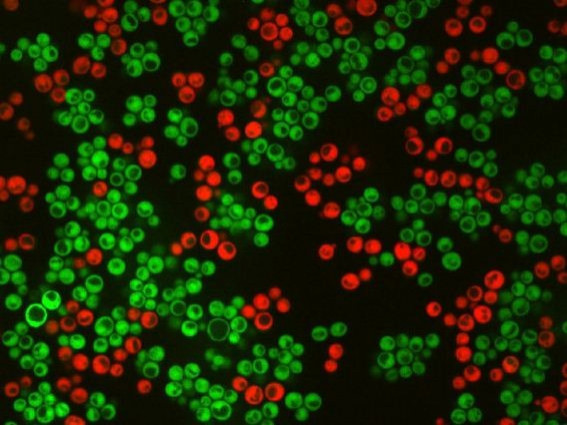Yeast Provides Clues to 'Why' Complex Life Had to Sprout: Study

Yeast cells, when clumped together, can absorb food more efficiently than when they live singly, discovered at a lab study at Harvard University.
The finding suggests new insights into the rise of multicellular life.
The "how" of multicellular creatures has been explained through science, but not "why", until a team of researchers led by Harvard professor Andrew Murray found that a clump of yeast cells are more effective in manipulating and absorbing sugars in their environment than were similar cells that stayed single.
The work offers a possible answer to the "why" - single-celled organisms benefited from cuddling together because they were more efficient in taking in nutrients.
"Because there is an advantage to sticking together under these circumstances, and because we know that lots of single-celled organisms make enzymes to liberate goods from their environment, this may be the evolutionary force that led to multicellularity," Murray said. "Short of inventing time travel and going back several billion years to see if this is how it happened ... this is going to remain speculation."
The research team has used yeast to examine the transmission of genetic information during cell division and the question of how cells respond to selective pressure, which is at work in the most recent yeast experiments.
Some mutations let yeast cells grow and divide more readily, giving them a better chance to pass their genes to subsequent generations and dominate the population, said a report on Harvard's news site.
Murray and his lab conducted a series of experiments, posing challenges for the yeast;
1. How to change the yeast's food from an unusable form to a usable form
2.How to actually take in the food
The researchers put the yeast in a solution of sucrose composed of two simpler sugars, glucose and fructose.
While yeast lives on sugar, the sucrose cannot penetrate the membrane around the cell. This makes the yeast generate an enzyme called invertase to divide the sucrose into glocose and fructose, so they can enter the cell.
The second challenge is how to bring the separated glucose and fructose to the transporters in the cell membrane. The gap can be bridged only through diffusion, but it is inefficient.
Researchers calculated that once a cell makes invertase and divides the larger sugar down to usable bits, only one sugar molecule in 100 would be captured by the cell that made it.
They also calculated that a single yeast cell in a dilute solution of sucrose cannot work alone and absorb enough glucose and fructose to be able to grow and divide.
However, by sticking together, clumps of yeast in the same solution could increase the density of sugars near the clump, increasing the chance for each cell to take in enough sugar to grow and divide.
Likewise, bacteria and other fungi can generate secret enzymes to break down starch in plants to digest the resulting simple sugars, explained postdoctoral fellow John Koschwanez who took part in the lab.
The study was published in the August 9 issue of the journal PLoS Biology.
"Based on the results, there is an advantage to sticking together," Murray said. Further investigations are conducted on whether eslective pressure would allow researchers to effectively evolve clumping yeast from those that live singly, said the Harvard report. According to Murray, results were preliminary, but promising.
© Copyright IBTimes 2025. All rights reserved.




















